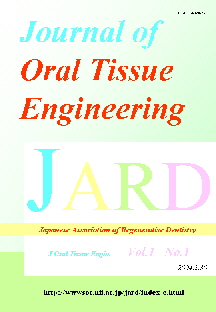Volume 10, Issue 2
Displaying 1-7 of 7 articles from this issue
- |<
- <
- 1
- >
- >|
ORIGINAL ARTICLES
-
Article type: ORIGINAL ARTICLE
2012Volume 10Issue 2 Pages 59-66
Published: 2012
Released on J-STAGE: July 24, 2014
Download PDF (1509K) -
Article type: ORIGINAL ARTICLE
2012Volume 10Issue 2 Pages 67-76
Published: 2012
Released on J-STAGE: July 24, 2014
Download PDF (933K) -
Article type: ORIGINAL ARTICLE
2012Volume 10Issue 2 Pages 77-81
Published: 2012
Released on J-STAGE: July 24, 2014
Download PDF (164K) -
Article type: ORIGINAL ARTICLE
2012Volume 10Issue 2 Pages 82-88
Published: 2012
Released on J-STAGE: July 24, 2014
Download PDF (623K) -
Article type: ORIGINAL ARTICLE
2012Volume 10Issue 2 Pages 89-94
Published: 2012
Released on J-STAGE: July 24, 2014
Download PDF (1208K) -
Article type: ORIGINAL ARTICLE
2012Volume 10Issue 2 Pages 95-103
Published: 2012
Released on J-STAGE: July 24, 2014
Download PDF (857K)
MINI REVIEW
-
Article type: MINI REVIEW
2012Volume 10Issue 2 Pages 104-109
Published: 2012
Released on J-STAGE: July 24, 2014
Download PDF (52K)
- |<
- <
- 1
- >
- >|
